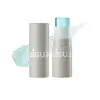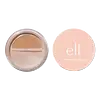What's inside
What's inside
 Key Ingredients
Key Ingredients

 Benefits
Benefits

 Concerns
Concerns

 Ingredients Side-by-side
Ingredients Side-by-side

C12-15 Alkyl Benzoate
AntimicrobialOctyldodecanol
EmollientHydrogenated Polyisobutene
EmollientIsotridecyl Isononanoate
EmollientDibutyl Lauroyl Glutamide
Skin ConditioningDibutyl Ethylhexanoyl Glutamide
Skin ConditioningParfum
MaskingDiisostearyl Malate
EmollientLinalool
PerfumingBorago Officinalis Seed Oil
EmollientPhenoxyethanol
PreservativeSclerocarya Birrea Seed Oil
HumectantSilica Dimethyl Silylate
EmollientHelianthus Annuus Seed Oil
EmollientCalcium Titanium Borosilicate
AbrasiveLimonene
PerfumingTitanium Dioxide
Cosmetic ColorantCocos Nucifera Oil
MaskingCalendula Officinalis Flower
Skin ConditioningCI 42090
Cosmetic ColorantGeraniol
PerfumingCI 19140
Cosmetic ColorantTin Oxide
AbrasiveC12-15 Alkyl Benzoate, Octyldodecanol, Hydrogenated Polyisobutene, Isotridecyl Isononanoate, Dibutyl Lauroyl Glutamide, Dibutyl Ethylhexanoyl Glutamide, Parfum, Diisostearyl Malate, Linalool, Borago Officinalis Seed Oil, Phenoxyethanol, Sclerocarya Birrea Seed Oil, Silica Dimethyl Silylate, Helianthus Annuus Seed Oil, Calcium Titanium Borosilicate, Limonene, Titanium Dioxide, Cocos Nucifera Oil, Calendula Officinalis Flower, CI 42090, Geraniol, CI 19140, Tin Oxide
Diisostearyl Malate
EmollientPhytosteryl/Isostearyl/Cetyl/Stearyl/Behenyl Dimer Dilinoleate
Skin ConditioningPolyisobutene
Polyethylene
AbrasiveSucrose Tetraisostearate
EmollientNeopentyl Glycol Diethylhexanoate
EmollientIsotridecyl Isononanoate
EmollientMicrocrystalline Wax
Emulsion StabilisingPentaerythrityl Adipate/Caprate/Caprylate/Heptanoate
EmollientIsostearic Acid
CleansingDibutyl Lauroyl Glutamide
Skin ConditioningParfum
MaskingDibutyl Ethylhexanoyl Glutamide
Skin ConditioningCaprylyl Glycol
EmollientTocopheryl Acetate
AntioxidantEthylhexylglycerin
Skin ConditioningHexyl Cinnamal
PerfumingLinalool
PerfumingTriethoxycaprylylsilane
Isononyl Isononanoate
EmollientBis-Diglyceryl Polyacyladipate-2
EmollientDimer Dilinoleyl Dimer Dilinoleate
EmollientPentaerythrityl Cocoate
Skin ConditioningPentaerythritol
HumectantDiisostearyl Malate, Phytosteryl/Isostearyl/Cetyl/Stearyl/Behenyl Dimer Dilinoleate, Polyisobutene, Polyethylene, Sucrose Tetraisostearate, Neopentyl Glycol Diethylhexanoate, Isotridecyl Isononanoate, Microcrystalline Wax, Pentaerythrityl Adipate/Caprate/Caprylate/Heptanoate, Isostearic Acid, Dibutyl Lauroyl Glutamide, Parfum, Dibutyl Ethylhexanoyl Glutamide, Caprylyl Glycol, Tocopheryl Acetate, Ethylhexylglycerin, Hexyl Cinnamal, Linalool, Triethoxycaprylylsilane, Isononyl Isononanoate, Bis-Diglyceryl Polyacyladipate-2, Dimer Dilinoleyl Dimer Dilinoleate, Pentaerythrityl Cocoate, Pentaerythritol
 Reviews
Reviews

Alternatives
Ingredients Explained
These ingredients are found in both products.
Ingredients higher up in an ingredient list are typically present in a larger amount.
We don't have a description for Dibutyl Ethylhexanoyl Glutamide yet.
We don't have a description for Dibutyl Lauroyl Glutamide yet.
Diisostearyl Malate is an emollient and most often used in lip products. It comes from isostearyl alcohol, a fatty acid, and malic acid, an AHA.
As an emollient, Diisostearyl Malate helps create a thin film on your skin to trap moisture in. This helps keep your skin soft and smooth.
We don't have a description for Isotridecyl Isononanoate yet.
Linalool is a fragrance and helps add scent to products. It's derived from common plants such as cinnamon, mint, citrus, and lavender.
Like Limonene, this ingredient oxidizes when exposed to air. Oxidized linalool can cause allergies and skin sensitivity.
This ingredient has a scent that is floral, spicy tropical, and citrus-like.
Learn more about LinaloolParfum is a catch-all term for an ingredient or more that is used to give a scent to products.
Also called "fragrance", this ingredient can be a blend of hundreds of chemicals or plant oils. This means every product with "fragrance" or "parfum" in the ingredients list is a different mixture.
For instance, Habanolide is a proprietary trade name for a specific aroma chemical. When used as a fragrance ingredient in cosmetics, most aroma chemicals fall under the broad labeling category of “FRAGRANCE” or “PARFUM” according to EU and US regulations.
The term 'parfum' or 'fragrance' is not regulated in many countries. In many cases, it is up to the brand to define this term.
For instance, many brands choose to label themselves as "fragrance-free" because they are not using synthetic fragrances. However, their products may still contain ingredients such as essential oils that are considered a fragrance by INCI standards.
One example is Calendula flower extract. Calendula is an essential oil that still imparts a scent or 'fragrance'.
Depending on the blend, the ingredients in the mixture can cause allergies and sensitivities on the skin. Some ingredients that are known EU allergens include linalool and citronellol.
Parfum can also be used to mask or cover an unpleasant scent.
The bottom line is: not all fragrances/parfum/ingredients are created equally. If you are worried about fragrances, we recommend taking a closer look at an ingredient. And of course, we always recommend speaking with a professional.
Learn more about Parfum